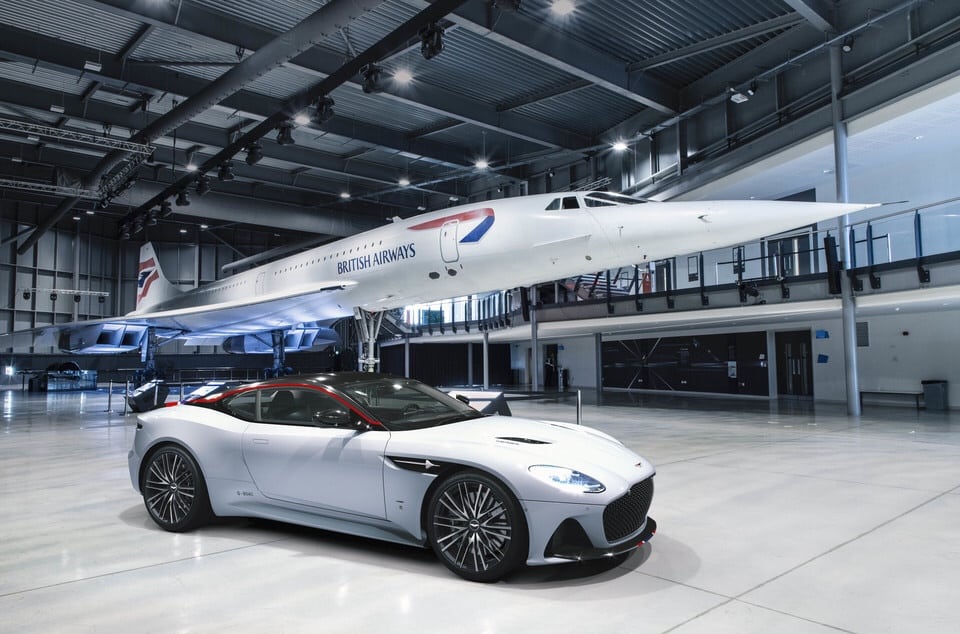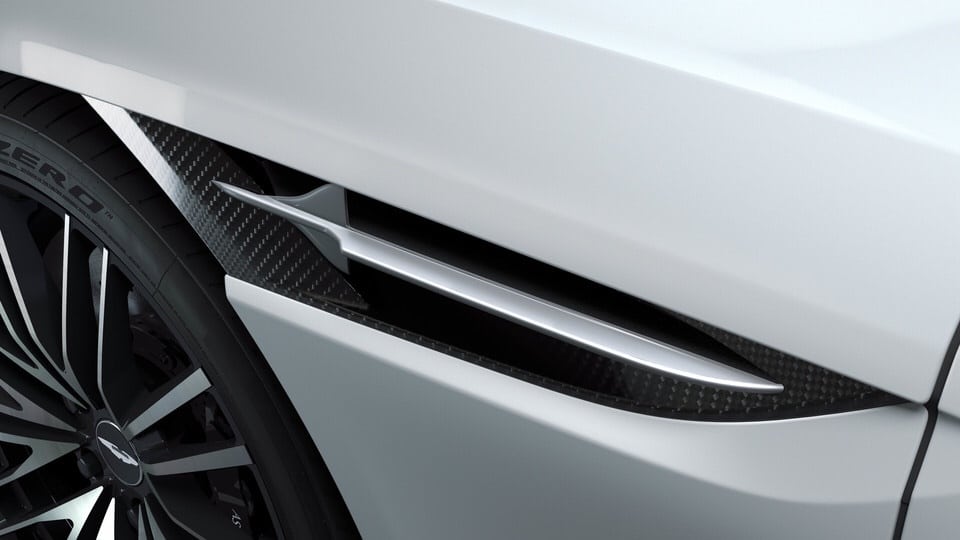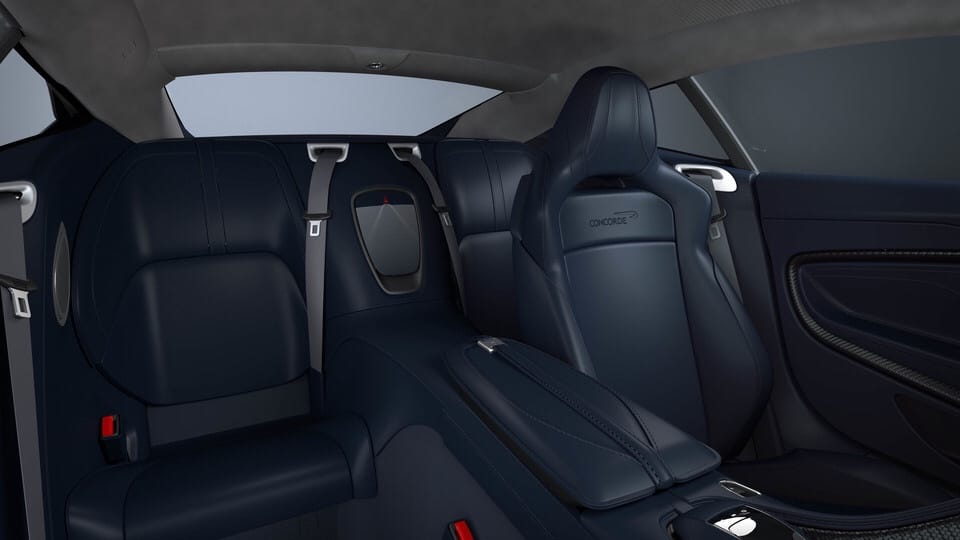Aviation
British Airways and Aston Martin gear up for take-off

London: November 26, 2019: In the airline’s centenary year and on the anniversary of Concorde’s final flight, British Airways is proud to announce a partnership with Aston Martin, with a limited-edition sports car that honours the supersonic aircraft.


Each model will have a unique CAA (Civil Aviation Authority) approved registration number and British Airways’ iconic Chatham Flag tailfin has been incorporated into the striking design. The exterior features a bespoke painted livery in the airline’s red, white and blue colours, and a black tinted carbon fibre roof emblazoned with Concorde’s streamlined silhouette. The paddle shifters will be made from the original Concorde metal and a Mach Meter graphic will be embroidered on the driver’s sun side visor; some of the many carefully judged design features that have been incorporated to celebrate the remarkable achievements of this aircraft.
British airways says goodbye first last 747 jumbo jets

British Airways re-introduces Airbus A380 in its fleet
A video and details of the DBS Concorde Edition can be seen here.


Strictly limited to just 10 examples and priced at £321,350, all will be available to purchase exclusively from Aston Martin Bristol. On November 26, 2003, Alpha Foxtrot, the last ever Concorde to be built, touched down for the final time at RAF Filton, which is just three miles from where the cars will be sold and home to one of the 10 Concordes that were made in Britain.


Parts of the proceeds from the sale of each individual car will be donated to the Air League Trust, a not-for-profit organisation that teaches under privileged children how to fly and work in engineering. In June 2020, British Airways and Aston Martin Bristol, in partnership with the Air League Trust, will run a week-long scholarship programme for young people at Cranfield University – funded by proceeds from the cars. This builds on British Airways’ BA 2119: Future of Fuels initiative, which the airline partnered with Cranfield University on earlier this year.

Aviation
Airbus Enhances A350 Cabin with 10-Abreast Seating

Airbus has announced a new partnership with Jiatai Aircraft Equipment, a Chinese aircraft seating manufacturer, to supply upgraded economy-class seats for the A350 widebody series.
This collaboration, unveiled at the 2024 Airshow China, focuses on developing a newly designed economy seat tailored for the A350‘s New Production Standard (NPS) cabin.
One of the key features of the NPS cabin is the ability to accommodate 17-inch wide economy seats, compared to the previous 16.5-inch wide seats that airlines were limited to in the A350’s earlier configurations.
British Airways Unveils Its Brand-New First Class Cabin for the Airbus A380
This change is made possible by the expanded space in the NPS cabin, which is 35 inches longer and 4 inches wider than the previous version. This extra space is achieved by slightly moving the cockpit wall forward and shifting the rear pressure bulkhead back by one frame.
The wider cabin allows airlines to add up to 30 extra economy seats without compromising comfort. For airlines opting for a 3-4-3 seating layout, the 17-inch wide seats are an excellent choice for a more comfortable passenger experience. However, some airlines, such as Iberia, may choose to retain a 9-abreast layout with wider seats for added comfort.
The NPS cabin also offers enhanced flexibility for airline operators. One major advantage is the ability to easily switch between a 9-abreast and 10-abreast seating configuration without requiring significant downtime for aircraft reconfiguration. Airlines can use the same seat rails, tracks, and IFE interfaces, making the transition smoother and quicker.
Etihad Airways Unveils 10 Exciting New Routes for 2025
In addition, the design of the floor attachments and air-conditioning systems has been optimized for 10-abreast seating, meaning airlines can upgrade their cabins without needing to make substantial modifications to the aircraft’s structure.
Though it’s still unclear when Jiatai’s economy-class seats will be officially added to the A350’s Buyer Furnished Equipment (BFE) catalogue, the collaboration marks a significant step toward enhancing the A350’s cabin offerings.
With this partnership, Airbus is providing more seating options for airlines, ensuring that they can meet diverse customer needs while improving overall operational efficiency.
-

 Aviation2 months ago
Aviation2 months agoMicrosoft Flight Simulator Raises $3 Million to Bring Back the An-225 Mriya
-

 Airlines2 months ago
Airlines2 months agoQatar Citizens Can Travel to the United States Without a Visa
-

 Aviation2 months ago
Aviation2 months agoQatar Airways bans these new Electronic Devices on plane
-

 Airlines2 months ago
Airlines2 months agoJapan Airlines Rolls Out Free Domestic Flights to International Passengers
-

 Defence2 months ago
Defence2 months agoWhich Country Has the Largest Fleet of Fighter Aircraft?
-

 Airport2 months ago
Airport2 months agoWestern Sydney Airport Welcomes Its First Plane After 6 Years of construction
-

 Airlines4 days ago
Airlines4 days agoDAMAC Air: Dubai’s New Luxury Airline Offers Free Flights for Registration
-

 Aviation2 months ago
Aviation2 months agoDid you know ? Once Boeing 747 carried 1088 passenger in 1991








